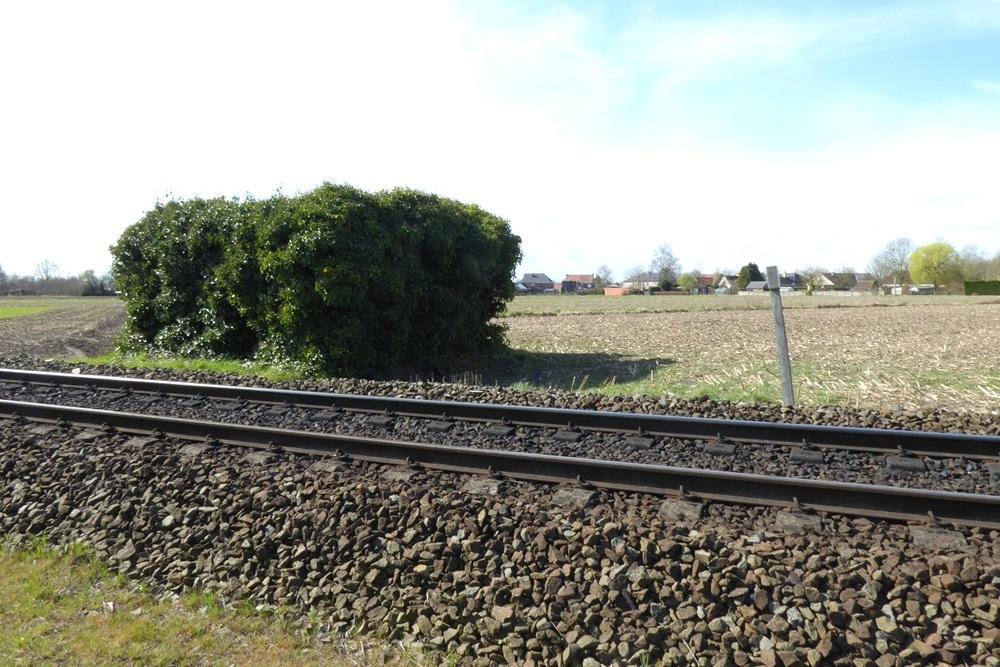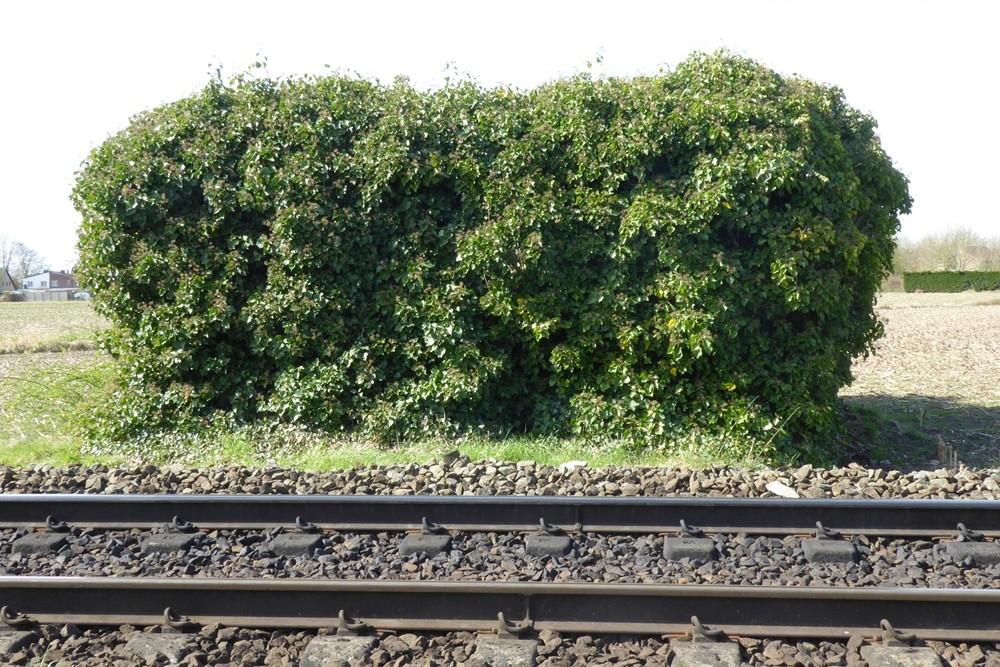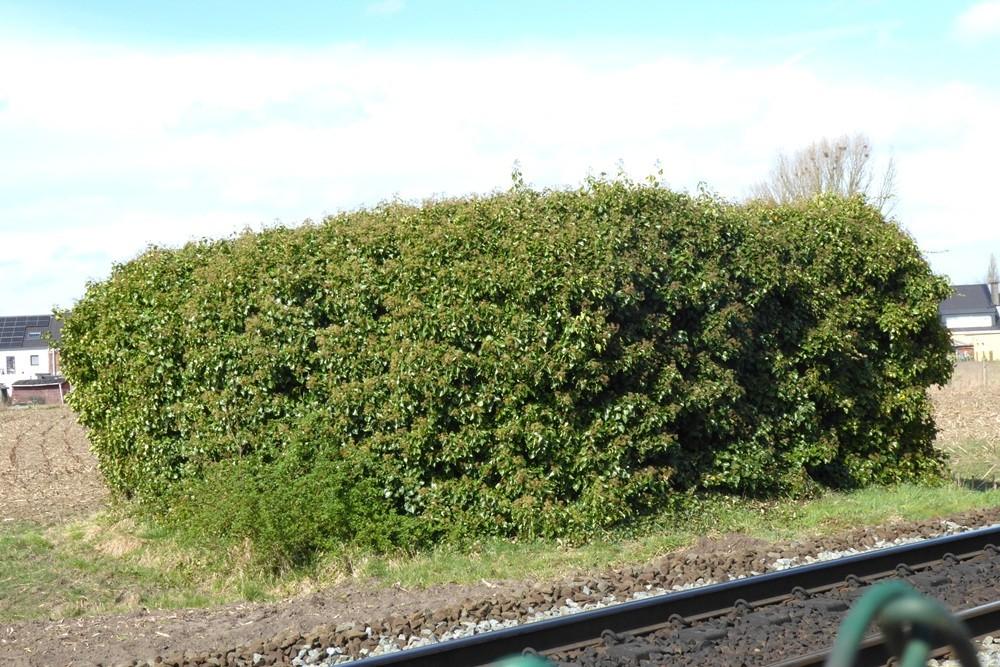Bunker Belt Bruggenhoofd Gent – Forward Line BunkerA13
Belgian bunker, part of the Ghent Bridgehead. This defensive position was constructed between 1934 and 1938, eight kilometres south of Ghent. Its construction was part of the fortification policy that Belgium pursued after the First World War.
The actual bridgehead consisted of two resistance nests – Betsberg and Muntekouter – and three strong points – Semmerzake, Eke and Astene.
The resistance nests and strong points were connected to each other by a curtain consisting of three defence lines.
There were 21 bunkers on the territory of Eke. Of these, 6 have now been demolished and 4 have been dug in. Of the remaining 11, some are on private property and are therefore not accessible.
Bunker A13 was located in the front line between the strong points Astene and Eke. Together with A12 and A14 it formed a strong point on the railway line. It was located at an angle to the A14 in order to have a larger field of vision and shooting range.
The bunker was originally completely walled with brick and had a fairly high saddle roof covered with red Boom roof tiles. The whole thing looked like a small house against the railway line.
The A13 consisted of two rooms that were interconnected. One room had an airlock at the back. In addition to the standard Maxim machine guns, it was also equipped for the placement of the Hotchkiss and Colt machine guns.
The bunker is located along the Gent-Oudenaarde railway line and is clearly visible from the Spoorwegpad, a narrow path for pedestrians and cyclists that starts at the railway crossing.
Extensive information about this bunker belt can be found on the site Bunkergordel Bruggenhoofd Gent. It also contains photos, plans and technical data of the bunkers. A map shows the locations per municipality.
Do you have more information about this location? Inform us!
Source
- Text: TracesOfWar
- Photos: Marie-Christine Vinck
Nearby
Point of interest
- Information Board Battle of Gavere Semmerzake - Semmerzake (Gavere)
- Bullet Impacts Communal Cemetery - Deinze
- Leopold barracks Gent - Gent
Monument
- War Memorial Eke - Eke (Nazareth-De Pinte)
- Memorial Grenadiers Eke - Eke (Nazareth-De Pinte)
- Commemorative Plates Veterans Nazareth - Nazareth (Nazareth-De Pinte)
Cemetery
- Belgian War Grave Eke - Eke (Nazareth-De Pinte)
- Belgian Graves Veterans Eke - Eke (Nazareth-De Pinte)
- Belgian Graves Veterans Nazareth - Nazareth (Nazareth-De Pinte)
Remembrance Stone
- Stumbling Stone Kortrijksesteenweg 890 - Gent
- Stumbling Stone Fortlaan 93 - Gent
- Stumbling Stones Goubaulaan 5 - Gent








